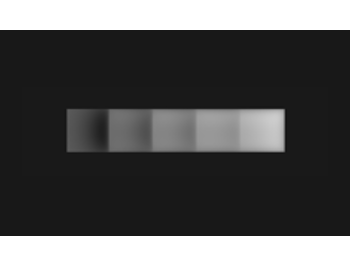
Rudd and Zemach analyzed brightness/lightness matches performed with disk/annulus stimuli under four contrast polarity conditions, in which the disk was either a luminance increment or decrement with respect to the annulus, and the annulus was either an increment or decrement with respect to the background. In all four cases, the disk brightness—measured by the luminance of a matching disk—exhibited a parabolic dependence on the annulus luminance when plotted on a log-log scale. Rudd further showed that the shape of this parabolic relationship can be influenced by instructions to match the disk’s brightness (perceived luminance), brightness contrast (perceived disk/annulus luminance ratio), or lightness (perceived reflectance) under different assumptions about the illumination. Here, I compare the results of those experiments to results of other, recent, experiments in which the match disk used to measure the target disk appearance was not surrounded by an annulus. I model the entire body of data with a neural model involving edge integration and contrast gain control in which top-down influences controlling the weights given to edges in the edge integration process act either before or after the contrast gain control stage of the model, depending on the stimulus configuration and the observer’s assumptions about the nature of the illumination.

A model of lightness computation by the human visual system is described and simulated. The model accounts to within a few percent error for the large perceptual dynamic range compression observed in lightness matching experiments conducted with Staircase Gelb and related stimuli. The model assumes that neural lightness computation is based on transient activations of ON- and OFF-center neurons in the early visual pathway generated during the course of fixational eye movements. The receptive fields of the ON and OFF cells are modeled as difference-of-gaussian functions operating on a log-transformed image of the stimulus produced by the photoreceptor array. The key neural mechanism that accounts for the observed degree of dynamic range compression is a difference in the neural gains associated with ON and OFF cell responses. The ON cell gain is only about 14 as large as that of the OFF cells. ON and OFF cell responses are sorted in visual cortex by the direction of the eye movements that generated them, then summed across space by large-scale receptive fields to produce separate ON and OFF edge induction maps. Lightness is computed by subtracting the OFF network response at each spatial location from the ON network response and normalizing the spatial lightness representation such that the maximum activation within the lightness network always equals a fixed value that corresponds to the white point. In addition to accounting for the degree of dynamic range compression observed in the Staircase Gelb illusion, the model also accounts for change in the degree of perceptual compression that occurs when the spatial ordering of the papers is altered, and the release from compression that occurs when the papers are surrounded by a white border. Furthermore, the model explains the Chevreul illusion and perceptual fading of stabilized images as a byproduct of the neural lightness computations assumed by the model.